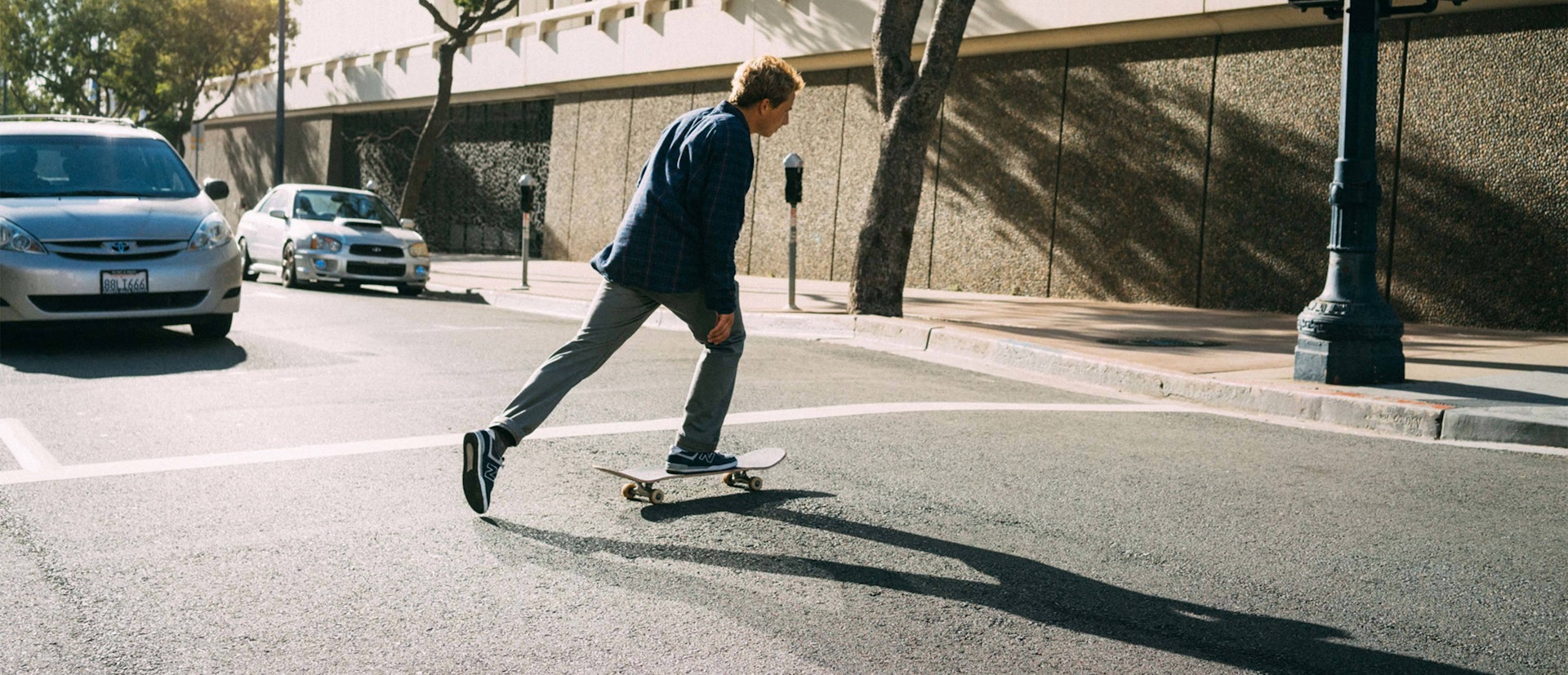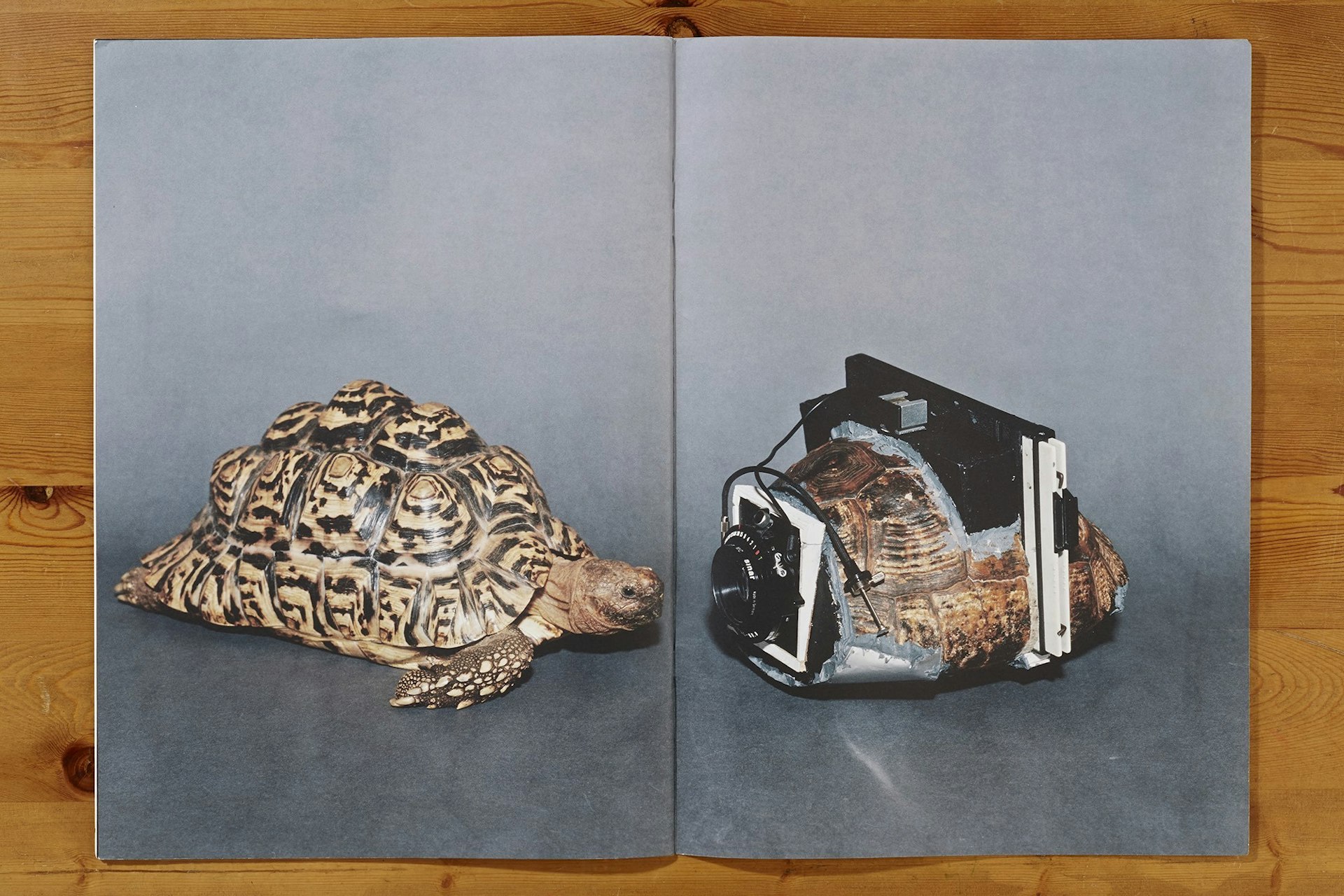
This is a do-it-yourself photobook manifesto
- Text by Alex King
- Photography by See captions
“A kid with access to a crap version of InDesign can now make something desirable with minimal design skills,” explains Bruno Ceschel, founder of Self Publish, Be Happy. “You don’t need the filter of galleries, or colleges, or publishers to say you can make a publication.”
Bruno was one of the first to join the dots between the growing army of talented photographers choosing to release experimental, self-published books and realise this wasn’t just a trend, but a sea-change that would leave the traditional publishing industry languishing in the dark ages.
In 2010, he founded Self Publish, Be Happy to create a platform for photographers to share work, connect with one another and legitimise their DIY approach. Now, SPBH have partnered with Aperture to release Self Publish, Be Happy: A DIY Photobook Manifesto and Manual.
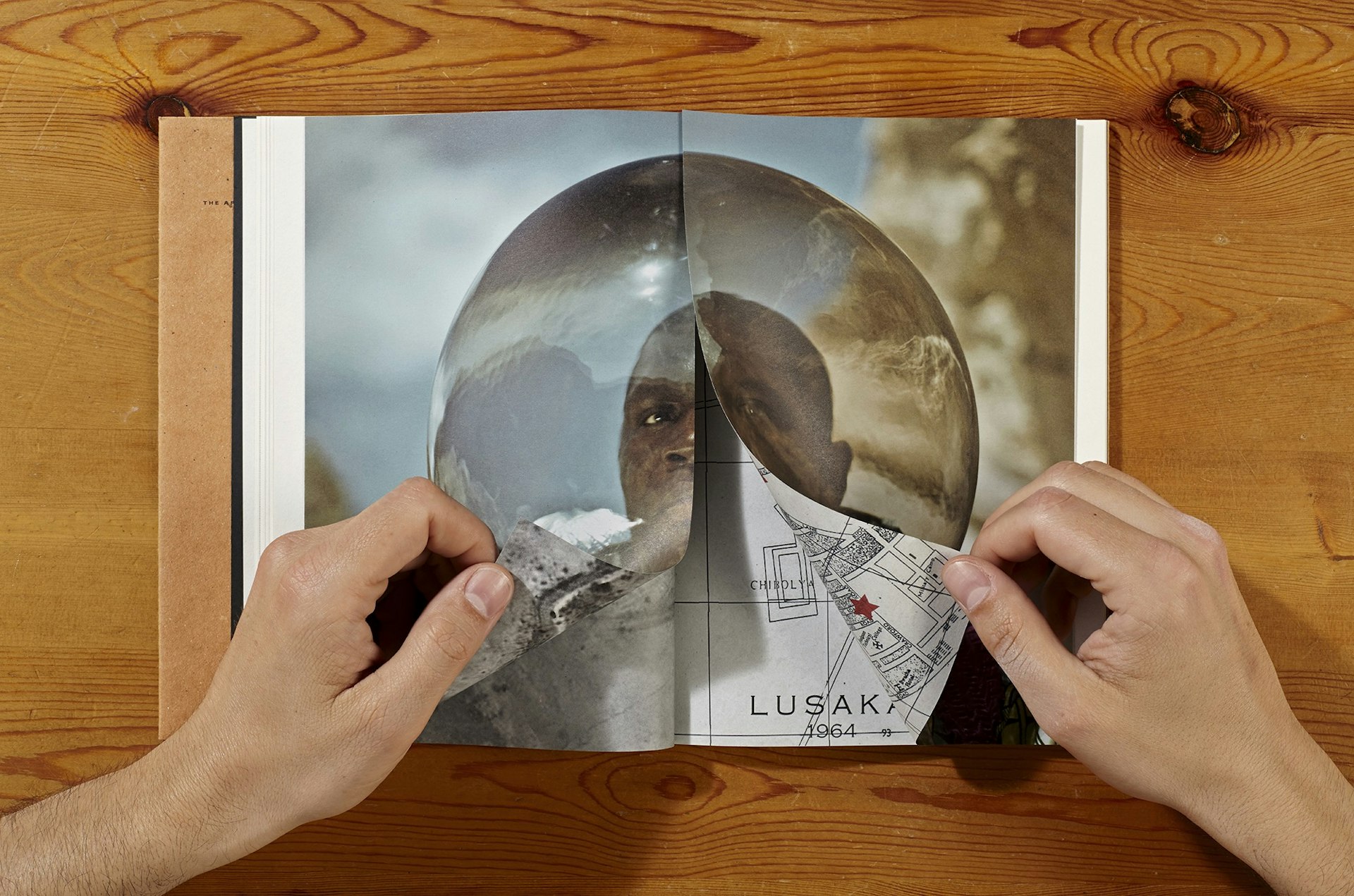
Cristina de Middel, The Afronauts, from Self Publish, Be Happy (Aperture/Self Publish, Be Happy, 2015)
While the book references some of most exciting and innovative self-published projects of recent years, such as Cristina de Middel’s, The Afronauts, Taiyo Onorato and Nico Krebs’ As Long As It Photographs, It Must Be a Camera and Nicolò Dante’s The Book of Dictators, Bruno is keen to point out it’s much more than just a ‘best of’.
“It is a call to arms—a rallying cry to take part, to act, to share,” he told Time. “But most importantly the book aims to prompt readers to make photos, to collaborate, and to publish them. In a time where everything is measured against its profitability, the act of making books, is not a nostalgic — or worse — retrograde endeavour, but it is an act of subversion, a flick of the middle finger to homogenous capitalist culture.”
“The act of self publishing has a longstanding roots, from the very beginning of the history of book making,” he adds. “It has always been an act of defiance against oppression (religious, political, economic, sexual, etc). DIY culture is, by its nature, an ethic in opposition to society’s rules at large. It flourishes in environments of communitarian support, collaboration, and even informal barter economies.”
If you needed any more encouragement to get out there and publish your own DIY photobook, the SPBH manifesto and manual is bursting with info to help make it happen. Here Bruno shares three of the most important pieces of advice with Huck.
How on earth am I going to be able to make a photo book?
The first thing you must do is demystify the idea of the photobook. As soon as you demolish every single convention about what a photobook should be, you will free yourself to dream up something new, exciting, and —most important – completely doable. Of course you love the classic, offset-printed, hardcover photobook! Who doesn’t? But this love should not prevent you from making your own book.
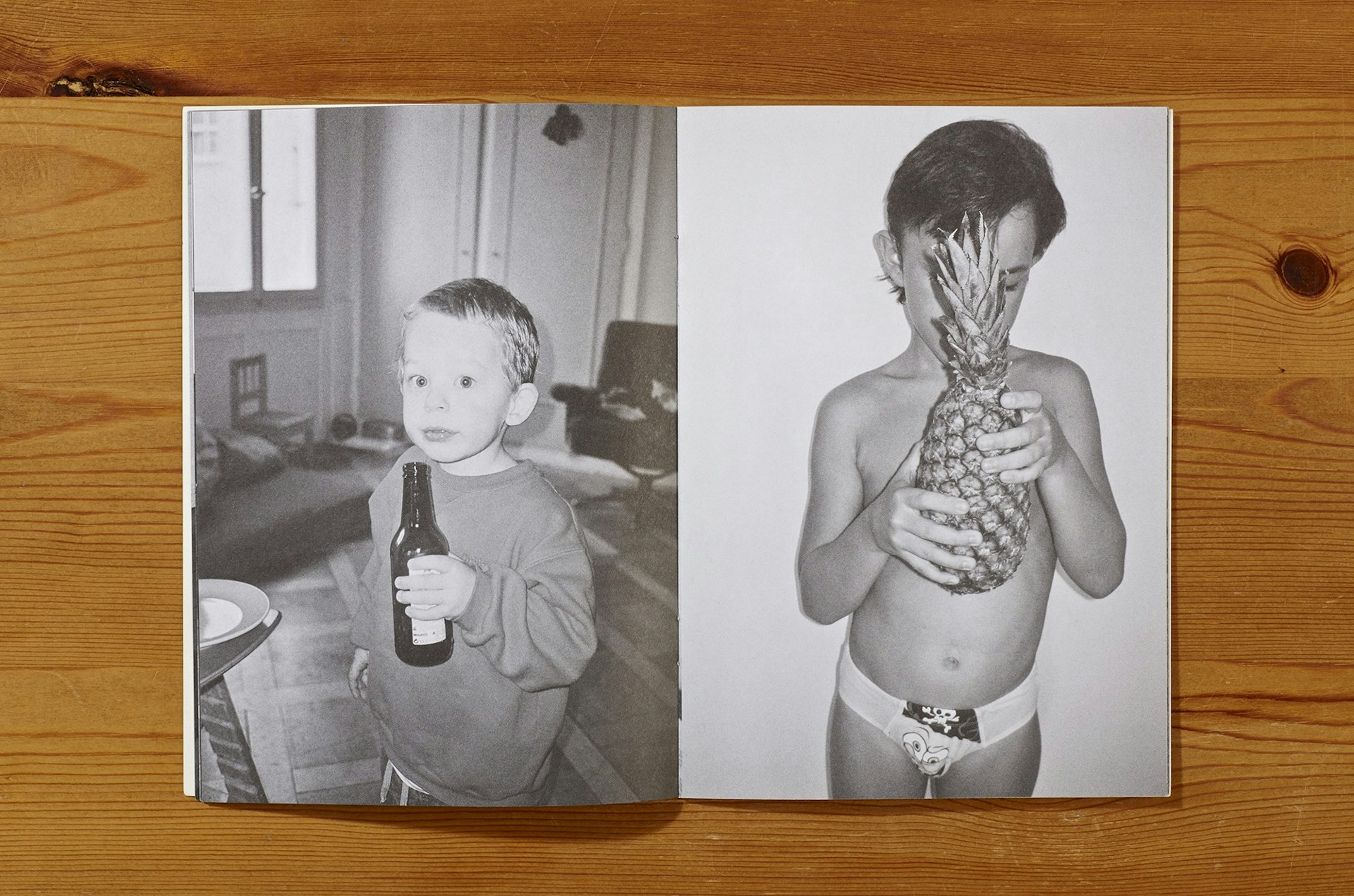
Erik van der Weijde, with Linus Bill, Takashi Homma, Erik Kessels, Paul Kooiker, and Eric Tabuchi, Foto.zine nr.4
Any progress in society is cast against a preexisting set of norms or expectations. Artists are often at the forefront of cultural revolutions, challenging the status quo. Now more than ever, the tools you need are right in front of you. Digital tools for printing and disseminating offer easy (and cheap) means to make publications and get them out into the world. The question here should really be: how on earth could I not make a photo book?
How to edit your photographs?
Editing — meaning selecting which images will go in the book — is a cruel job, especially if you’re the one who made the photographs. Sometimes it feels like a real sacrifice. Without getting too biblical about it, you have to be strong and brutal. You have to leave behind your emotional attachment to the images in order to serve the interest of your book project. It doesn’t matter if you waited 20 years for the eclipse: if the photo you took of it doesn’t work, just let it go.
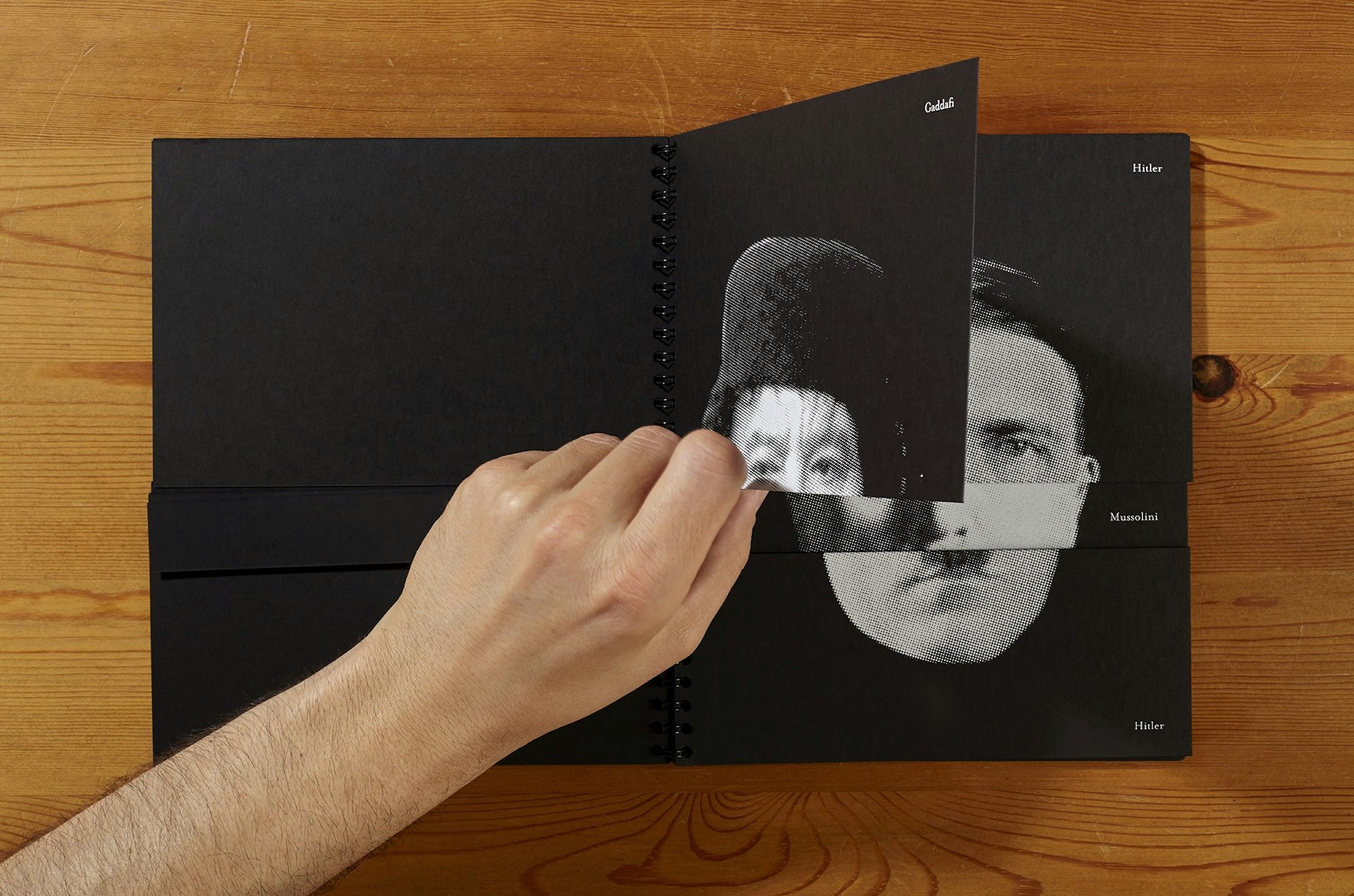
Nicolò Dante, The Book of Dictators
To get going, group the photos by subject, theme, aesthetic, colour, or composition. Group and regroup until you feel you have begun to make sense of the work. Dealing with hundreds of photos might feel overwhelming, but smaller groups are much easier to handle. The groups will also help you to see what you do or don’t have, and help you see patterns emerge within and between your photographs. Then, start selecting the good ones. Keep two things in mind while you do this: the intrinsic quality of each photograph, and its function or role in the overall project. Sometimes a good photograph will simply not fit the message or concept you are trying to portray. Be willing to kill it.
Often self-published books suffer from self-indulgent photographers who cannot be objective and keep far too many photos in the edit, compromising the final result. If you feel you are one of those, ask for help from trusted colleagues, friends, or editors.
How to make $$$ with your book?
Get ready to have piles of book boxes in your bedroom. And prepare to become friendly with the people at the post office. That is what distribution is all about. If you are your own distributor, you need to be good at handling orders, whether directly from visitors to your website (the real gold mine), or from the retailers that sell it for you. When people pay you money, they expect to get a book! The advantage of handling distribution yourself is that you are rewarded by direct communication with the people who love your book. The disadvantage is that it becomes a job.
The same thing applies to running a table (or half a table, or a quarter) at one of the many great book fairs around the world, or figuring out which of the great bookshops might like to sell your book, and who exactly you need to call in order to present the book to them for consideration.
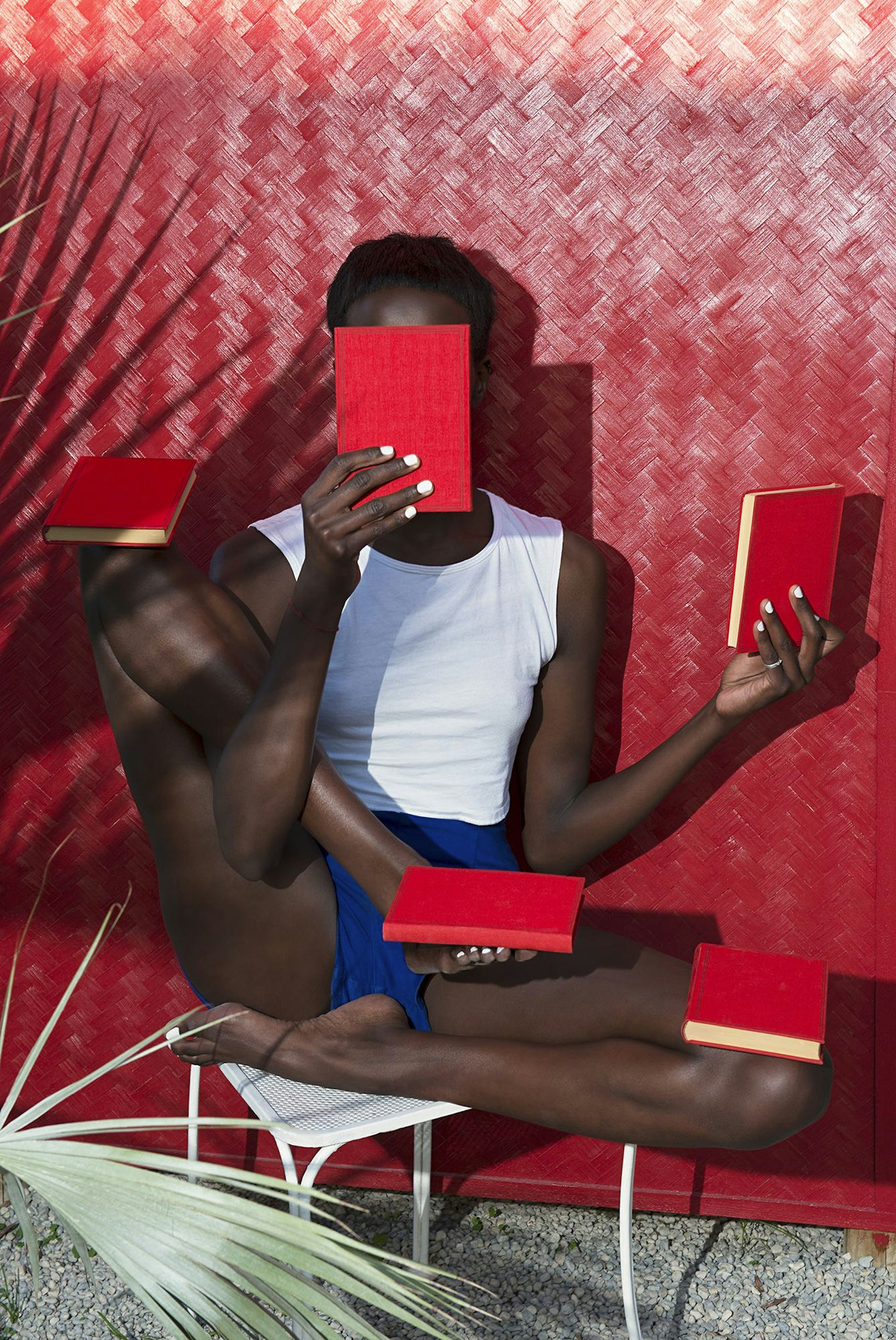
Nicolas Haeni and Thomas Rousset, untitled
One thing to always remember: before getting into business with somebody, do a bit of research about their line of credit. Another rule that will keep you out of trouble: money first, goods after. (That is, if you manage to convince a store to take the book on firm sale terms as opposed to consignment.)
Finally, the ultimate enemy is Amazon. If you bought this book there: shame on you! With its forced discount policy (often more than 52 percent off the suggested retail price), Amazon is destroying the industry, one art book at a time. Local bookstores and alternative online retailers are your friends — or, if they aren’t now, make it your business to make them your friends.
Self Publish, Be Happy: A DIY Photobook Manifesto and Manual is published by Aperture/Self Publish, Be Happy.
